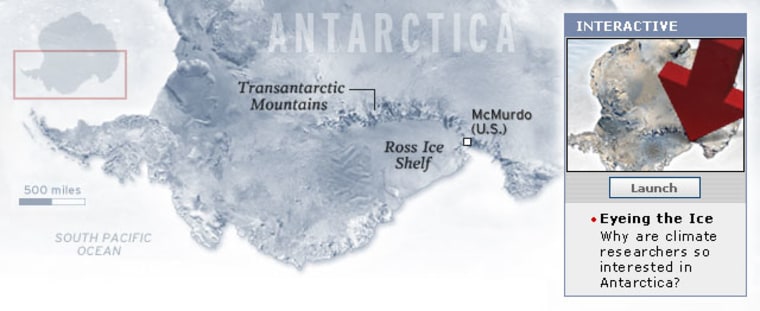The ice mass stuck to Antarctica is more than a mile thick in places and covers an area larger than the continental United States. But in recent years, it has been melting at an alarming rate: An estimated 36 cubic miles of ice disappeared into the Southern Ocean sea last year — 36 times as much water as Los Angeles uses annually.
The melt is one of the reasons that the world's sea levels have risen by 7 inches over the last century. It might not sound like much, but if sea levels rise by just a few more inches over the next several decades, some shoreline and island communities around the world would be swamped. Literally.
And since climate scientists don't expect an about-face in the current trend of global warming, the quest to predict temperature and sea level trends has taken on greater urgency.
Some answers could lie deep below the Ross Ice Shelf off Antarctica, specifically in sediment on the sea floor. Borrowing technology from the oil industry, scientists are drilling 250 feet through the mass of ice to find a picture of the world's climate over the past 17 million years and come up with scenarios for what could be next.
The National Science Foundation is overseeing the $30 million project. Watch the video on this page to learn why scientists believe it's worth spending a fortune to drill into a sea floor.
Part of the mandate of the science foundation, which is funded by the federal government, is to provide reporters access to the remote region.
It's summer now in the Southern Hemisphere, and MSNBC.com accepted an offer to spend a week at the McMurdo Station. Photojournalist John Brecher and I will report from the field, interviewing scientists as well as providing a look at life at the sprawling outpost, home to 1,100 researchers and support staff during the bustling summer months.
We'll return with plenty of material for a broad examination of climate change, to be published in January, following a look at warming in Alaska, another area that scientists believe holds answers to where the Earth's climate is headed.
To learn more about Antarctica's importance to climate scientists, click on the interactive for an audio tour by Tom Wagner, who manages the NSF's geology programs.
